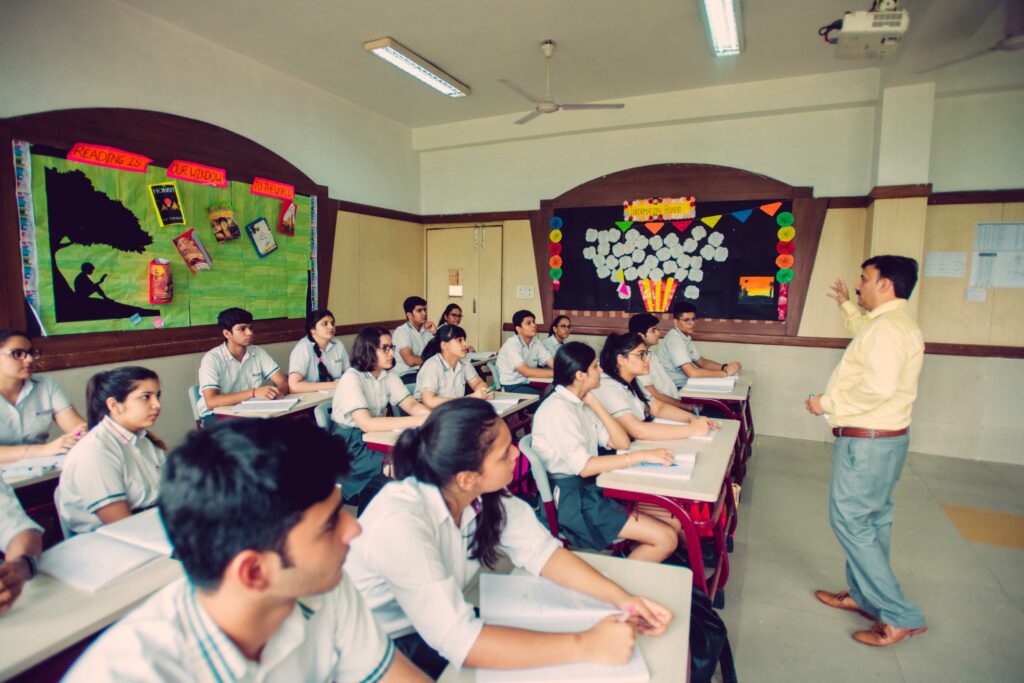When it comes to learning, there is no limit and asking questions is a powerful way to learn endlessly. Asking questions is a skill required by people in all roles, be it as a student, a teacher or for any job functions and professions. Asking questions is an effective way to better communicate and connect with others. Curious questioning enriches our minds and helps us to make better sense of the world.
Yet, many of us hesitate to ask questions. In a classroom we may feel that we might appear to be less knowledgeable or beconsidered not smart enough as compared to our classmates. But this is not true. No questions are silly. All questions matter. Hence, every question is valid and worth asking.

So, let us delve deeper into WHY QUESTION? Why asking is so very crucial especially as a learner and as a teacher? Well, the advantages are endless!
- Questions are powerful as it starts engaging the person’s brain. Questions help students retain the content by putting into words otherwise unarticulated thoughts.
- Questions eliminate confusion. This enables you to analyse a concept from different angles and understand the concept more deeply.
- Questioning in class can make one learn faster and increase the ability to remember the concepts better, in a more detailed manner.
- By asking a question, you solve not only your doubts but may also help your friends in the process, who might have been hesitant to ask the same question.
- Asking questions also builds your confidence to a great extent.
- Asking questions help facilitate learning, invention and discovery – about how things work, and also why things don’t. It stimulates innovation, helping to identify new ways of doing things, new models, new solutions.
- Questioning leads to active learning rather than passively receiving information. Actively showing interest and involving yourself in the subject matter has many added advantages.
- It increases your analytical thinking ability which is the ability to think in a more organised and rational manner. When you get focused on such thinking you can create breakthrough answers.
- Asking questions cause someone else to feel special and important at the same time, we also demonstrate humility to another.
- It is also a way of thinking where we admit to ourselves that we may not know the answer to everything or the willingness to know more.

Various Types of Questions
Teachers and students will both benefit from questions that are purposefully designed. Asking thoughtful questions presents teachers with more information in relation to student understanding. Students too need to know that right kind of questions bring clarification and elaboration of their ideas and make their thinking visible to the teacher. This helps the teacher address misconceptions.
- Questions spun out from the discussion itself can help guide the discussion, However, questions also need to be pre-planned to achieve to reach the goal.
- Simple YES or NO type questions encourage students to respond without fully thinking through an idea. These are usually closed-ended questions or Lower-level questioning that simply requires students to gather and recall information.
- Using Bloom’s Taxonomy – Higher Order Thinking – HOT questions help promote critical thinking skills because these types of questions expect students to apply, analyse, evaluate and create information instead of simply recalling facts.
- Higher Order Thinking or open-ended questions give people the freedom to express their ideas, thoughts and encourages critical thinking and creativity.
- Application questions require students to transfer knowledge learned in one context to another.
- Analysis questions expect students to break the whole into component parts such as analyse setting, characters, express opinions and draw conclusions after reflecting about details and facts gained from previous experiences.
- Evaluation questions require students to make judgments, explain reasons for judgments, compare and contrast information, and develop reasoning using evidence from the text.
- Creative questions have students use old ideas to create new ones using information from a variety of sources.

Teachers may use a random approach where they pick name chits of student from a small box just to add an element of suspense and also to ensure equitable participation, and keep students intellectually engaged. The teacher can significantly enhance the analytic and problem-solving skills of students by allowing sufficient wait times before responding, both after posing a question and after the answer is given. This allows everyone to think about not only the question but also the response provided by the student. Teachers need to plan questions strategically to encourage students to obtain a deeper understanding. It is important for teachers to groom students for being able to frame thoughtful questions.
Dr G. S. Matharoo
Chairman
Prudence Group of Schools

